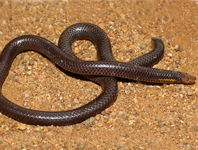Abstract
Males of the neotropical bee genus Ruizantheda Moure sensu lato (Halictinae: Caenohalictini) differ from those of other caenohalictine genera in having the outer gonostylar plate with a large membranous region that extends to the ventral region, and the ventral gonostylar lobe retrorse. These features permit the placement of six additional species described here, four of which are new, in the genus in this broader sense. The males of these six species share the following characteristics: profemur swollen; mesofemur exceedingly swollen; mesotibia slightly swollen with flat, minutely ridged ventral area and small apical tooth; S4 shortened medially, commonly largely hidden under S3, with transverse median depression and apical margin emarginate; apicolateral lobes of S4 with tuft of branched setae and stout, simple, recurved setae on margin; S5 with U-shaped gradulus and setal patch, sometimes inconspicuous; outer lateral expansion of penis valve bilobed, and median posterior margin of volsella strongly angulate. Together, these species constitute a new group within Ruizantheda and share with the previously known Ruizantheda inca Coelho, Felizardo, & Engel, R. aerugineus Coelho, Felizardo, & Engel, and R. kallos Coelho, Felizardo, & Engel, a short outer gonostylar plate, terminating before the apex of the main gonostylar lobe as well as the presence of long setae on its dorsal surface. In other species of Ruizantheda the outer gonostylar plate extends beyond the apex of the main gonostylar lobe and lacks setae. The species comprising this distinctive subgroup of Ruizantheda, and treated herein, are: R. nigra n. sp., R. colombiana n. sp., R. venezuelana n. sp., R. baeri (Vachal) n. comb., R. pilosa n. sp., and R. gaullei (Vachal) n. comb. Two of the new species expand the distribution of the genus northward into Colombia and Venezuela. In addition to the description and illustration of the species, an updated key to the species of Ruizantheda s. l. is provided.
References
Arnett, R.H., Jr., Samuelson, G.A. & Nishida, G.M. (1993) The Insects and Spider Collections of the World. Sandhill Crane Press, Gainesville, Florida, 310 pp.
Coelho, B.W., Felizardo, S. de S. & Engel, M.S. (2014) Three new species of the bee genus Ruizantheda sensu lato (Hymenoptera: Halictidae: Caenohalictina). Zootaxa, 3889 (1), 58–70.
https://doi.org/10.11646/zootaxa.3889.1.3Cure, J.R. (1989) Revisão de Pseudagapostemon Schrottky e descrição de Oragapostemon, gen.n. (Hymenoptera, Halictidae). Revista Brasileira de Entomologia, 33, 229–335.
Engel, M.S. (2000) Classification of the bee tribe Augochlorini (Hymenoptera: Halictidae). Bulletin of the American Museum of Natural History, 250, 1–90.
https://doi.org/10.1206/0003-0090(2000)250%3C0001:COTBTA%3E2.0.CO;2Engel, M.S. (2001) A monograph of the Baltic amber bees and evolution of the Apoidea (Hymenoptera). Bulletin of the American Museum of Natural History, 259, 1–192.
https://doi.org/10.1206/0003-0090(2001)259%3C0001:AMOTBA%3E2.0.CO;2Engel, M.S. (2009) Revision of the bee genus Chlerogella (Hymenoptera, Halictidae), Part I: Central American species. ZooKeys, 23, 47–75.
https://doi.org/10.3897/zookeys.23.248Gonzalez-Vaquero, R.A. & Roig-Alsina, A. (2009) The bee genus Ruizantheda (Hymenoptera: Halictidae), its scope and description of a new species. Zootaxa, 2282, 62–68.
Gonzalez-Vaquero, R.A. & Roig-Alsina, A. (2013) Revision of the species of the bee genus Caenohalictus (Hymenoptera: Halictidae) occurring in Argentinean Patagonia. Zootaxa, 3670 (4), 493–515.
https://doi.org/10.11646/zootaxa.3670.4.5Michener, C.D. (2007) The Bees of the World. 2nd Edition. Johns Hopkins University Press, Baltimore, Maryland, xvi + [1] + 953 pp., 20 pls.
Moure, J.S. (1964) Two new genera of halictine bees from the Araucarian subregion of South America (Hymenoptera: Apoidea). Journal of the Kansas Entomological Society, 37, 265–275.
Moure, J.S. (2012) Halictini Thomson, 1869. In: Moure, J.S., Urban, D. & Melo, G.A.R. (Orgs.), Catalogue of Bees (Hymenoptera, Apoidea) in the Neotropical Region. Online Version. Available from: http://www.moure.cria.org.br/catalogue (accessed 21 September 2017)
Rojas, A.F. & Toro, G.H. (2000) Revisión de las especies de Caenohalictus (Halictidae: Apoidea) presentes en Chile. Boletín del Museo Nacional de Historia Natural, 49, 163–214.
Rojas, A.F. (2001) Nueva especie de Ruizantheda Moure (Apoidea: Halictidae: Halictini) de Chile. Revista Chilena de Entomología, 28, 33–38.
Schrottky, C. (1913) La distribución geográfica de los himenópteros argentinos (conclusión). Anales de la Sociedad Científica Argentina, 75 (5), 225–286.
Vachal, J. (1903) Étude sur les Halictus d’Amerique (Hym.). Miscellanea Entomologica, 11, 89–104.
Vachal, J. (1904) Voyage de M.G.A. Baer au Tucuman (Argentine). Hymenoptera mellifera (familia unica: Apidae). Revue d’Entomologie, 23, 9–26.

